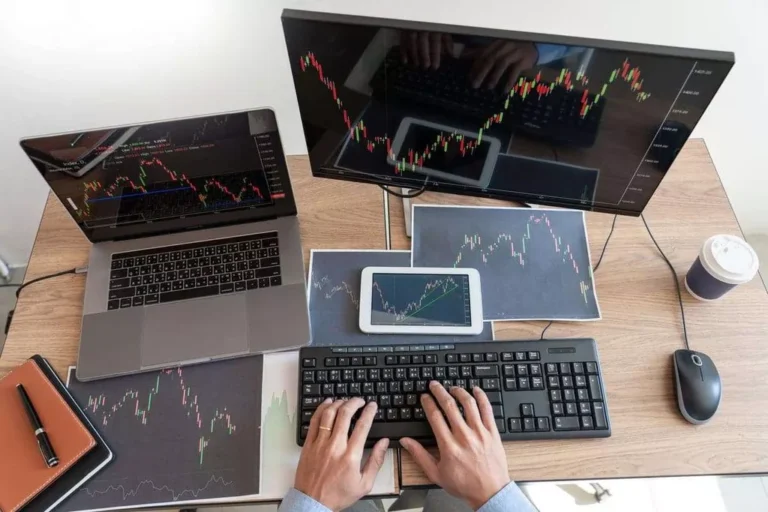Content
It allows the buyer to Decentralized finance purchase an asset at a specified price called the strike price. On the other hand, a put option allows the buyer to sell an asset at the strike price. Swap derivatives can also be customized to meet the parties’ specific needs. For example, an inflation swap allows two parties to exchange a fixed rate for an inflation-linked rate, which can be useful to hedge against inflation risk. On the other hand, currency swaps involve the exchange of cash flows in one currency for cash flows in another.
Spot Contracts vs. Derivative Contracts
The spot market is also known as the cash market or physical market because cash payments are processed immediately, and there is a physical exchange of assets. Derivative markets reflect the views and expectations of traders about future prices, which aids in price discovery for the underlying assets. The prices of derivatives contain valuable insights into the future supply and demand as well as fair valuations of the assets. They settle the difference between the futures price and the spot price of the underlying asset without exchanging the https://www.xcritical.com/ physical asset. The exchange clearinghouse plays a crucial role in cash settlement, acting as the central counterparty between buyers and sellers. It collects margins and collateral from both sides and guarantees that obligations will be fulfilled even if one party defaults, thus reducing counterparty risk.
Assets Information and Risk Management
This means there is spot vs derivatives an inherent risk that you could make a loss (or a profit) that could far outweigh your initial capital outlay. Crypto derivatives can take many forms, such as futures, options, and swaps. Each type of derivative has unique characteristics, so choosing the one that best suits your trading strategy is essential.
What is the difference between a security and a derivative?
There is no difference between spot, cash and undated markets – these are simply different names for the same type of market. For example, if you think the price of silver is going to increase, you will buy the spot silver market (go long). If the silver price increased, you would make a profit, but if it decreased, you would make a loss. For derivatives to thrive in a sustainable manner, these disadvantages must be addressed through prudent risk management, consistent regulation, transparency, innovation and moderation in risk-taking. A balance is needed between reaping the rewards of derivatives and avoiding their pitfalls.

Among these, spot and futures markets are fundamental, each with unique characteristics and roles in the financial ecosystem. Speculators aim to profit from price changes in the crude oil futures market without any interest in the physical oil, betting solely on price direction. The futures price of crude oil depends on factors like current supply and demand, geopolitical events, inventories, and weather. The futures curve reflects the market’s expectation of oil prices over different time horizons.
- Crypto derivatives can take many forms, such as futures, options, and swaps.
- Derivatives trading in crypto involves buying and selling contracts whose value is based on the price of an underlying cryptocurrency without actually owning the asset itself.
- It is also the level of margin that applies to each position (whether actual or predicted) that is different.
- Short-selling in particular can bring significant profits or losses, as there’s no limit to how high a market’s price can rise.
The price at which these assets are traded is called the spot price—the price for immediate sale. This is one reason why this market is also called a cash or physical market. Assets traded in the spot market include equities, fixed-income products, currencies, and commodities. The cryptocurrency market has also embraced spot contracts, allowing traders to buy and sell digital assets like Bitcoin and Ethereum instantly. Spot trading in cryptocurrencies is popular among investors seeking to capitalize on the volatile nature of digital currencies.
When you get an option, you pay a fee (premium) for each share to fix that strike price. The key thing about options, different from futures, is that you have the choice to buy or sell, but you’re not forced to. If you don’t use the option, the only money you lose is the premium you paid at the beginning to secure that strike price.

In January 2020 the ADV on Bakkt futures was only $12 million, compared with $450 million on CME futures. So, it is not surprising that about 95% of new information – on institutional bitcoin platforms – is led by traders on the CME. You think the price of Brent Crude may go down, so you want to hedge your oil shares with us using CFDs. CFDs are calculated based on the difference between the market price when you open your position vs when you close it, and a single standard Brent Crude oil contract is equal to $10 per point. So, you decide to go long, with $100 that the exchange’s market price will go up by your futures contract’s expiry date.
It offers direct ownership of cryptocurrencies and a more transparent trading environment. Ready to take control of your trading strategy in the spot and futures markets? Join TIOmarkets, the top-rated forex broker, and access a wide range of trading instruments. With over 170,000 accounts opened in more than 170 countries, we provide a robust platform for trading Forex, indices, stocks, commodities, and futures with low fees. Enhance your skills with our comprehensive educational resources and step-by-step guides.
The crude oil futures market allows major oil producers and consumers to transfer price risks through hedging and enables speculators to profit from anticipated oil price changes. The derivative contract between two parties specifies the details of a derivative transaction including the underlying asset, amount, price, and expiration date. The contract obliges the parties to buy or sell the underlying asset at a specific price on a future date. Traders gain exposure to price movements of the underlying assets with only a small initial outlay, by using derivatives for leverage. Gains and losses are amplified from even small changes in the price of the underlying. There are different types of crypto derivatives that expand the investor’s choice of trading options, such as futures, options and perpetual.

Currency futures are cash-settled based on the WM Reuters closing spot rates on expiration days, with traders not receiving physical foreign currency bills and coins. Commodity futures are often cash settled based on exchange-determined closing prices on expiration days, although some exceptions like crude oil do have provisions for physical delivery. Arbitrageurs are traders who exploit price differences between derivative markets and the underlying asset markets to make riskless profits.
Regulations are not consistent across countries and markets, and traders exploit loopholes for profits. They structure derivative transactions in ways that circumvent regulations, often taking substantial risks while avoiding oversight and compliance rules. Such regulatory arbitrage shifts risks to areas with higher tolerances and more opacity.
They allow participants to enter a contract to buy/sell a specific asset at a predetermined price without a specific day. Using crypto spot exchanges, users can store their assets using a dedicated decentralised wallet assigned to them while creating their accounts. This is a much faster way for clients to buy and store their first virtual coins and for crypto holders to sell their digital assets.
You are advised to perform an independent investigation of any transaction to determine whether any transaction is suitable for you. In the complex world of trading, understanding the various types of risks involved is paramount to successful decision-making. Factors such as current events, market sentiment, and economic indicators can influence these prices. Margin will also be calculated to cover expected payments for positions that have gone to delivery.
Spot markets involve the physical transfer of goods between buyers and sellers; prices in these markets reflect current (or very near term) supply and demand conditions. Crude oil futures require margins and are leveraged, allowing control of a large oil position with a small initial outlay. While leverage amplifies profits, it also exacerbates losses, with strict margin rules in place to manage risk. There are several popular types of futures contracts, including commodity futures on assets like crude oil, gold, and wheat, which allow producers and consumers to hedge price risks.